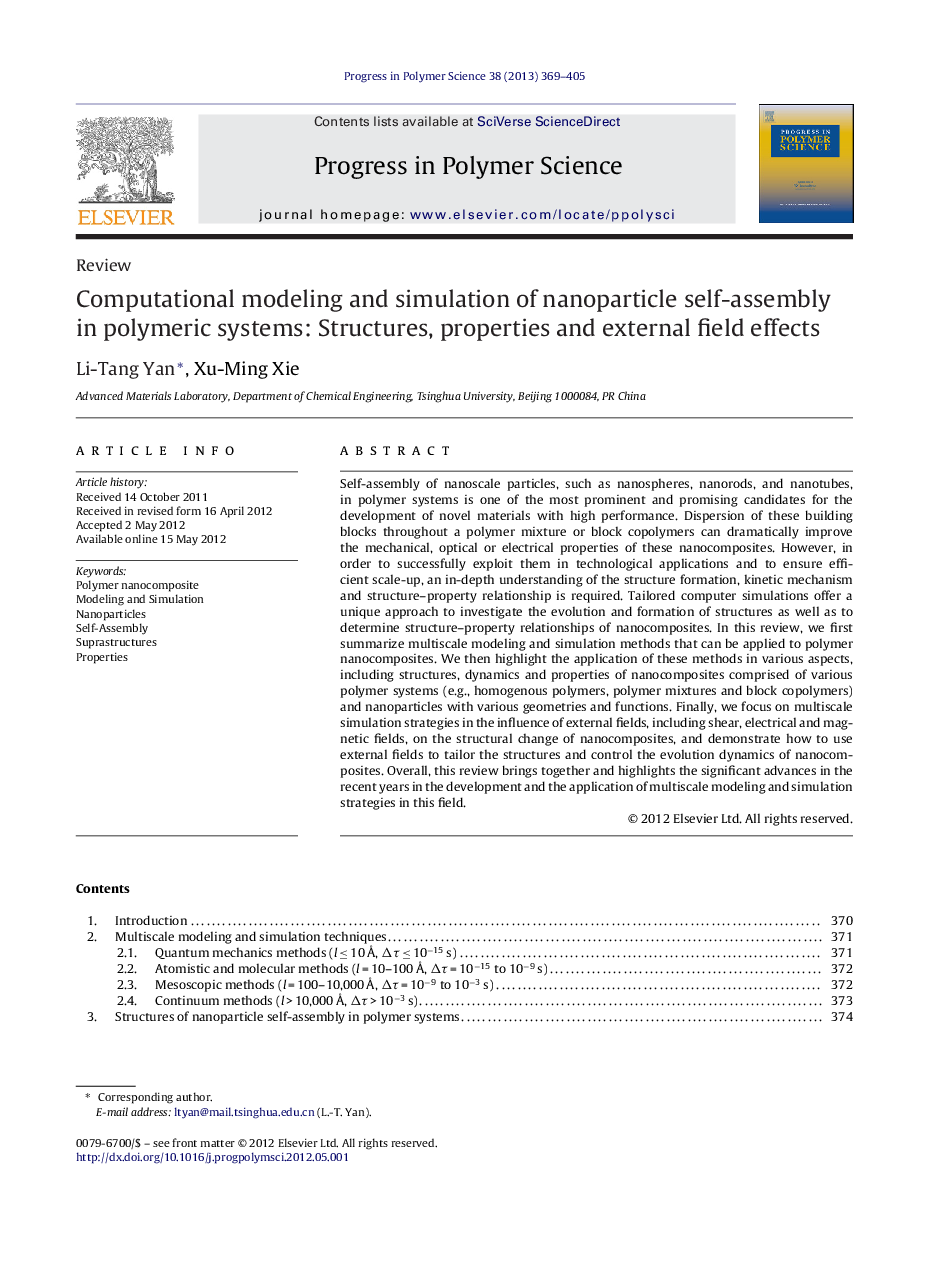| Article ID | Journal | Published Year | Pages | File Type |
|---|---|---|---|---|
| 5208487 | Progress in Polymer Science | 2013 | 37 Pages |
Self-assembly of nanoscale particles, such as nanospheres, nanorods, and nanotubes, in polymer systems is one of the most prominent and promising candidates for the development of novel materials with high performance. Dispersion of these building blocks throughout a polymer mixture or block copolymers can dramatically improve the mechanical, optical or electrical properties of these nanocomposites. However, in order to successfully exploit them in technological applications and to ensure efficient scale-up, an in-depth understanding of the structure formation, kinetic mechanism and structure-property relationship is required. Tailored computer simulations offer a unique approach to investigate the evolution and formation of structures as well as to determine structure-property relationships of nanocomposites. In this review, we first summarize multiscale modeling and simulation methods that can be applied to polymer nanocomposites. We then highlight the application of these methods in various aspects, including structures, dynamics and properties of nanocomposites comprised of various polymer systems (e.g., homogenous polymers, polymer mixtures and block copolymers) and nanoparticles with various geometries and functions. Finally, we focus on multiscale simulation strategies in the influence of external fields, including shear, electrical and magnetic fields, on the structural change of nanocomposites, and demonstrate how to use external fields to tailor the structures and control the evolution dynamics of nanocomposites. Overall, this review brings together and highlights the significant advances in the recent years in the development and the application of multiscale modeling and simulation strategies in this field.
